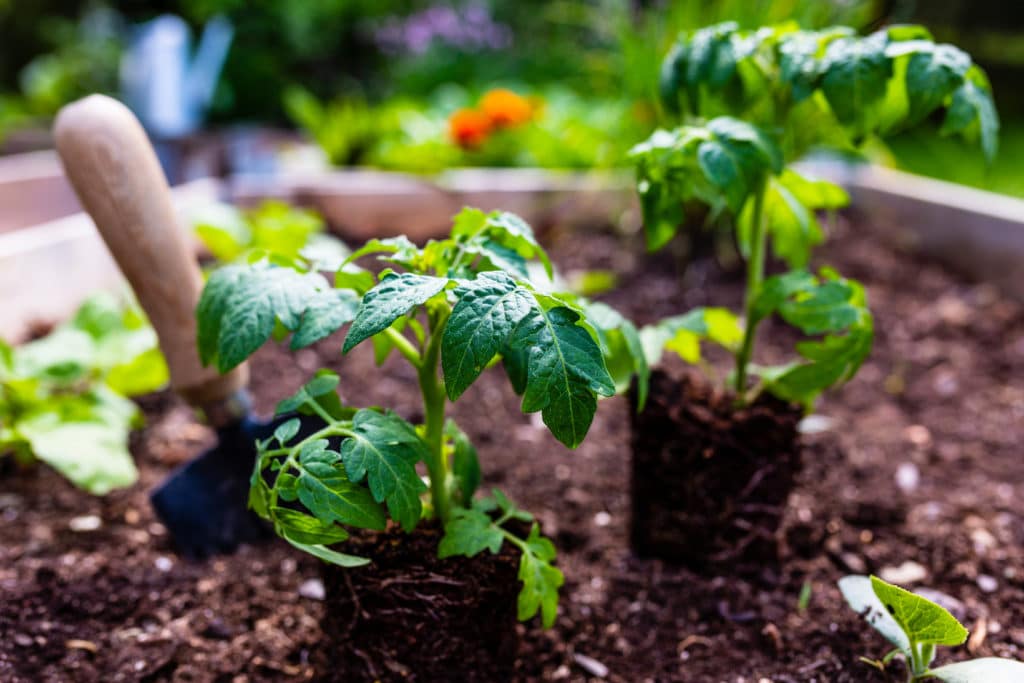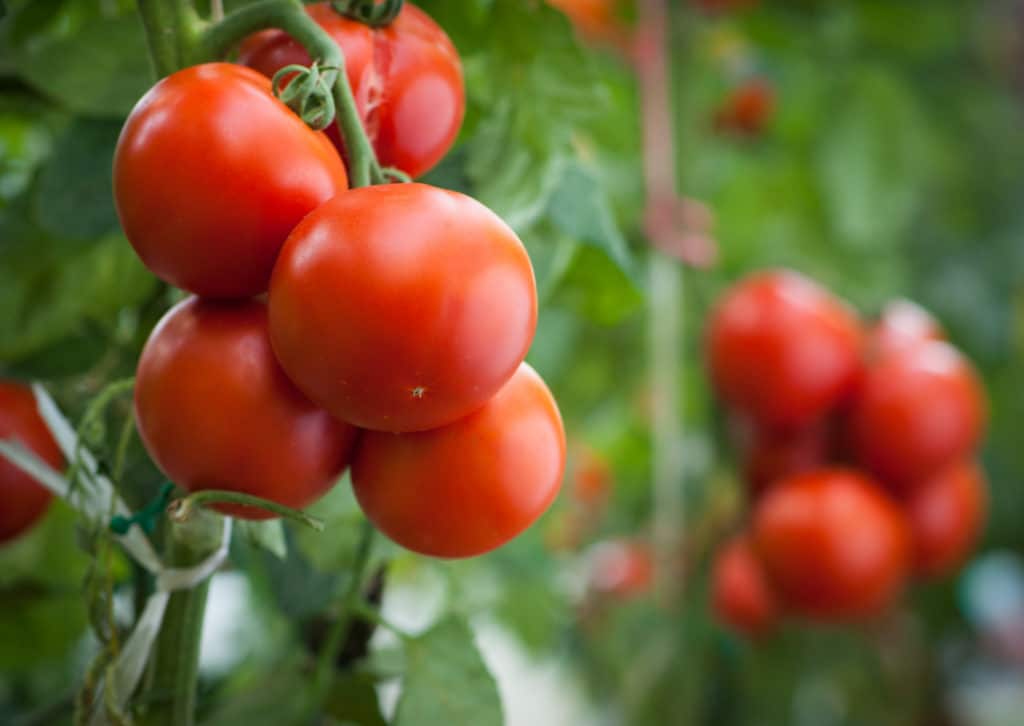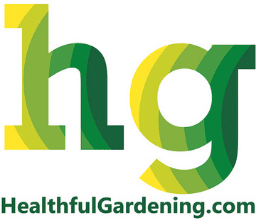
Tomato plants that are properly spaced are likely to be healthier and produce a greater crop than those that are crowded or too widely separated. The distance between tomato plants is determined by two things: the sort of tomatoes you’re growing and how you intend on supporting them. It’s simple to determine how far apart to plant tomatoes once you have those important details.
So, how far apart should tomatoes be planted in a vegetable garden? Planting tomatoes 18 to 24 inches apart is advised according to general recommendations. However, the appropriate distance varies depending on the type of tomato you are growing and where you intend to plant it.
Read on to learn more about how far apart you should plant tomatoes and the reasons why tomato plant spacing is so crucial.
Tomatoes in the Future: Reasons to Plant Tomatoes Apart
There are several good reasons to space your tomatoes properly. The following are just a few of the reasons:
- The health of the tomato plant is one of the most important things to consider.
- The tomato plant’s lighting requirements
- Every plant’s nutritional demands
- The fruit’s total annual production
- The accessibility of your tomato plants
Tomato Plant’s Health
The most significant reason to plant tomatoes from each other is for the health of the tomato plants. When plants are kept too close together, there’s a higher chance of disease.
Tomato ailments such as powdery mildew, brown rot, and blossom-end rot can all thrive when plants are too close together because they are unable to dry out fully owing to wet leaves.
Because the leaves of tomato plants dry out more swiftly when they are kept at greater distances from one other, keep them at least three feet (one meter) asunder. Also, keeping a gap between the plants will help to prevent insect migrations and reduce the number of bug infestations.
Tomato plants require adequate ventilation between them to avoid the spread of illness and insect infestations.
Tomato Plants’ Lighting Requirements
Tomatoes are partial to bright sunshine. However, since the plants are planted too far apart, insufficient sunshine may not reach all of the plant’s leaves. Because the plant can’t absorb enough sunshine energy to be transformed into energy for the plant to develop, it won’t grow.
Plants that are hidden by others may develop tall and straggly stems, rather than short and bushy.
The plants’ leaves will be a pale green rather than a vibrant, healthy green. The tomatoes produced by the plant may not mature properly.
For Every Plant, There Are Specific Nutritional Requirements
Tomato plants require water and nutrients from the soil to thrive. When tomato plants are grown too close together, they must compete for nutrients. Plants that do not get enough nutrients from the soil will be weak, more prone to disease, and yield less fruit.
Because of their sensitivity to pests, these plants will be more vulnerable to bug infestations. Plants that don’t get enough water wilt and perish.
Spacing your tomato plants correctly will guarantee that each plant has adequate access to nutrients and water to thrive.
Production of fruit on an annual basis
Overcrowding has an adverse impact on your tomato’s fruit production. If your plants are too densely packed, the leaves will be tiny and the stems will be scraggly and flimsy. Worse yet, each plant will produce fewer flowers.
There are fewer tomatoes in a crop that has more flowers, and the stems will be unable to support the fruit that do develop, resulting in fruit loss.
Overcrowding can also obstruct pollination, so even if your plants have plenty of blossoms, the pollinators may not be able to discover them, resulting in a reduced fruit set.
Tomatoes: How Accessible Are They?
The simplest reason to space your tomato plants apart is accessibility. To check the health of each tomato plant, look for pests, remove suckers, prune it, stake it, and pick the tomatoes, you must be able to reach it.
If your tomato plants are close together, you won’t be able to meet the demands of the plant. When you try to reach in and harvest or stake the plant, there’s a danger of damaging or breaking the plants or fruit.
You’ll have to plant your tomatoes a distance apart depending on a variety of circumstances:
- Tomato type
- Tomato variety
- Garden type
- Soil type

Tomato Type: Determinate or Indeterminate
Determinate Tomato Varieties
Determinate tomato plants are more compact and may be cultivated in a cage or without the use of supports since they are smaller and more compact.
Tomatoes grown in pots are generally the best option because they don’t require as much space. Determinate tomato plants have a shorter growing season and will produce fruit earlier in the year before being ‘spent’ or finished.
Determinate tomatoes need about one and a half to two feet of space between each row, depending on the variety. You’ll want to set your rows at least two or three feet apart.
Indeterminate Tomato Varieties
Indeterminate tomato plants grow more slowly, but they require considerably more room. These are the kinds of tomatoes that must be staked because it’s difficult to predict how large they will get.
In spite of the fact that these plants take longer to bear fruit, they will continue to grow and produce fruit until frost. They have a considerably extended growing season.
Indeterminate types can be planted closer together on a trellis if you grow them on one. Plant tomatoes one and a half to two feet apart in each row.
Place indeterminate tomato plants in wire cages two to three feet apart if you want to expand them.
You’ll have some vertical space, but you’ll also need some horizontal space.
If you allow your indeterminate tomatoes to spread out on the ground, you’ll need a minimum of three to four feet of space between plants because they will take up considerably more horizontal area than vertical.
How Close Is It Okay To Plant Staked Tomatoes?
Staking your indeterminate tomatoes will necessitate planting them about 24 inches apart in your rows. This will keep them growing upright, saving you more room in your garden.
However, if you allow them to spread without being staked, you’ll need more area between them so they can expand.
Because these plants can reach up to eight feet tall, you’ll need to leave a 36 to 48-inch gap between each plant in a row so that they have room to expand.
To get the most out of your plants, space them four feet apart. You’ll have more room to walk between them, care for the plants, and harvest your tomatoes.
If you have plenty of room in your garden, you may let them spread out and wander about. The plant will put roots down anywhere it comes into contact with the earth to obtain additional nutrients from the dirt.
However, if you don’t have enough space to let your tomatoes “free-range,” you’ll want to stake them so they can be planted closer together.
How Far Apart Should Caged Tomatoes Be Planted?
Determinate tomatoes can grow to a precise height, making cages ideal for them.
Determinate tomatoes grow to a height of two to four feet tall, depending on the cultivar. As a result, you’ll be able to choose the proper size tomato cage for the sort of tomato you’re growing.
In a determinate plant, the fruit is formed on one side of the tomato and ripens to black before falling off. Tomatoes that are planted in cages with rows four feet apart can be two feet apart.
This provides you plenty of room to maneuver around your tomatoes. If you try to reach in and harvest or prune your tomato plants, be careful not to break them.
Tomato Spacing: Plant Variety
The type of tomato you grow may also alter your spacing requirements. Indeterminate tomatoes are usually heirloom varieties. These are the types that demand the most room in your garden. Hybrids tend to be determinate, which have been developed to exhibit certain traits, such as smaller growth rates.
The smaller kinds, such as cherry tomatoes, require less room than larger tomatoes. There is also a dwarf tomato cultivar. These are the tiniest plants available, and they come in determinate or indeterminate forms.
Dwarf tomato plants are usually only two to four feet tall, however, they produce tomatoes that are quite big. They may have greater fruit yields since more of their effort goes into fruit production.
One of the most significant advantages of growing dwarf tomato plants is that they may be grown closer together. Staked or caged dwarf tomatoes can be cultivated as close as one foot apart.
Most seed packets give you instructions on how far apart to plant your tomatoes.
However, here is a brief tutorial on tomato spacing for different varieties of tomato plants.
Indeterminate Varieties
- Heirloom tomatoes are usually indeterminate.
- Plants grown on a vertical trellis should be spaced one and a half to two feet apart in each row. There’s more plants per square foot due to the vertical space available.
- Wire cages, on the other hand, necessitate more space and should be planted two to three feet apart per row.
Keep in mind that if you grow determinate tomatoes in cages or trellises, however, they need three to four feet between plants to spread out on the ground.
Determinate Varieties
Determinate tomatoes require one and a half to two feet between plants and two to three feet between rows.
Container Varieties
Tomatoes should be grown in pots that hold at least 5 gallons. Pots may be planted as closely together as you like.
Tomato Plant Spacing by Gardening Style
The type of garden you have will also influence how close you can put your tomatoes. The following are examples of common types of gardens:
- Traditional row garden
- Raised bed garden
- Square foot gardening
- Container gardening
Traditional Row Garden
Plants are planted in rows in a regular row garden. Depending on the previously stated criteria, your tomato plants will be separated by anything from 12 inches to 48 inches in each row.
Plants should be spaced 4 feet apart in rows to allow for easy access to the tomatoes and ample room to thrive. These gardens require a lot of area.
Raised Bed Garden
Raised beds are a fantastic space-saving option. Building a four-foot by four-foot frame and filling it with high-quality raised bed soil is one of the techniques advised by Bonnie Plants.
This will ensure that your plants receive enough nutrients so they don’t have to compete for resources.
In each corner of the bed, plant a large staked or caged tomato and fill in the rest of the area with smaller herbs.
This will take better advantage of the soil in your garden and the space you have. You won’t need to worry about row spacing because the plants will be able to overflow the edges of the bed without clashing for area.
Square Foot Garden
In a square-foot garden, the distances between plants are measured in one-foot sections rather than rows. You may take the room required to grow your tomato plants and divide it equally.
If your determinate tomato plant requires 2 feet between plants and 4 feet between rows, each plant will require around 8 square feet to thrive.
Instead of putting your plants in smaller groups and bigger rows, try interspacing them evenly across an 8 square foot section. Because it allows for airflow and nutrient supplies without crowding the plants, this method works.
However, you must be able to get to the plants, so the amount of square feet sections that you can reach is limited.
Container Gardening
Tomatoes that are determinate or dwarf will benefit most from container gardening. Each plant will thrive in its own big container. The advantage of container gardening is that you may arrange the containers as close together as you like.
Because they are all in their own container, the plants will not compete for soil or nutrients.
If you cannot reach all of the tomatoes, simply relocate the containers that are in the way without harming the plants. Container gardening is wonderful since it allows you to grow plants on a limited amount of space or even if you don’t have a garden at all.
Tomatoes will grow in containers if planted correctly. However, make sure the pots are at least five gallons in volume and fourteen inches in diameter.
Larger pots are even more desirable. You may put the containers next to one another just as you would in the yard.
The Importance Of Soil On Tomato Spacing
Plant your tomato plants a little closer together in such conditions if you have good, nutrient-dense, loamy soil because the soil has enough life-sustaining qualities.
If your soil is poor, hard clay, or excessively dry, however, you may need to plant your tomatoes farther apart in order for them to have the best chance of flourishing under the circumstances you are facing.
Final Thoughts
Tomato plants that are planted too densely suffer from a number of health and productivity problems, including disease and insect infestations. They will not be as healthy or robust, and the amount of fruit they produce will be limited. Their fruit will be difficult to get to because it is buried under so many other fruits.
Tomatoes that are planted farther apart will be healthier, stronger, and produce more, larger fruit. The distance between plants varies depending on variety, type, soil condition, and method of staking. If you’re unsure about a spacing option, go with the largest setting.
If you’re not sure what type of tomatoes or soil you have, keep tomato plants four feet away from one another and four feet apart in between rows. You can improve your chances of growing healthy, productive tomatoes by following these steps.
